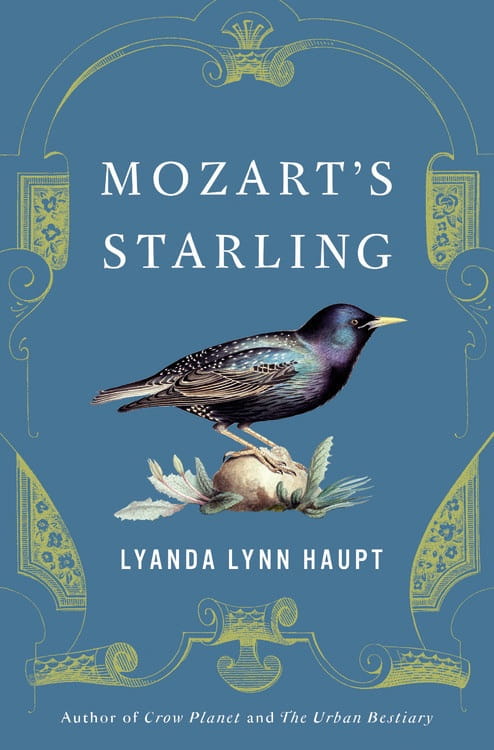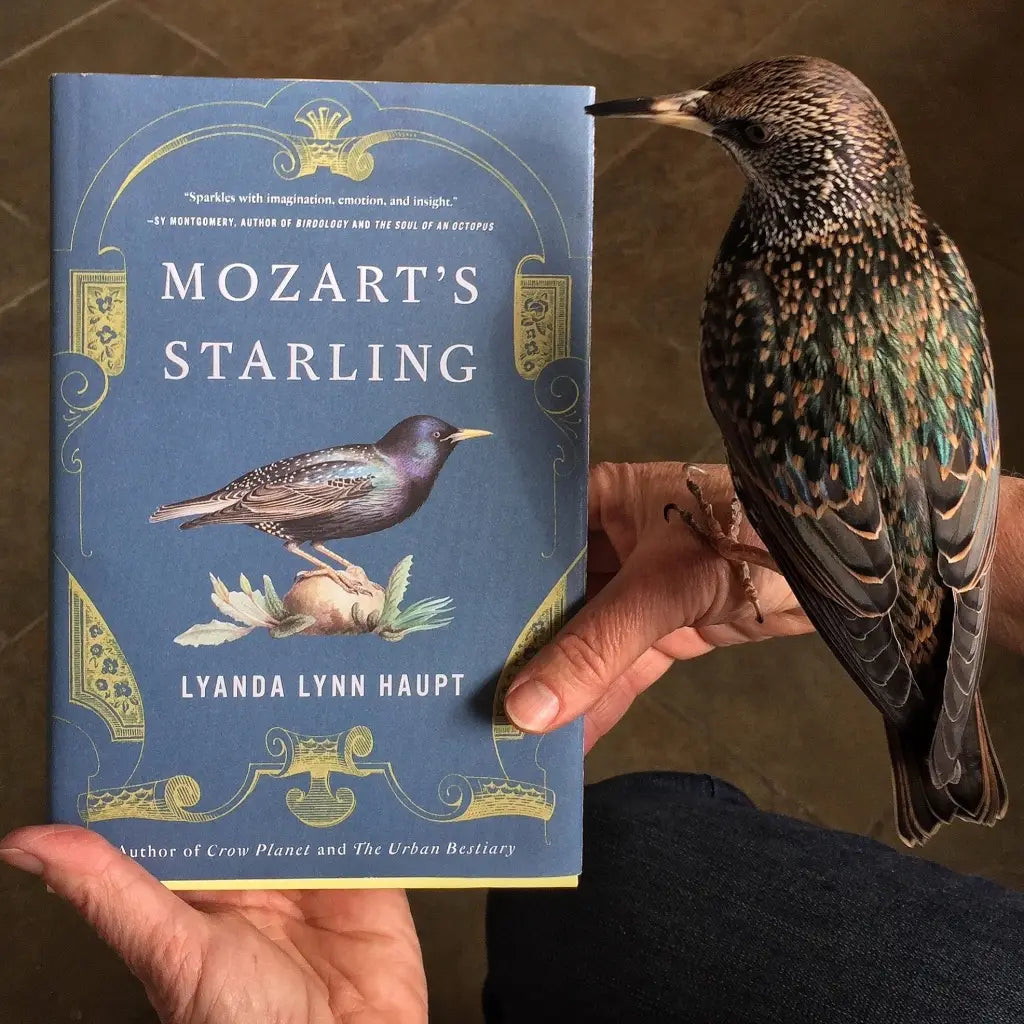
Who knew? I mean I’ve read many books on this, my desert island composer. Alfred Einstein, Peter Gay, the Dover edition of the collected letters, etc. Perhaps I missed the mention of a starling somewhere in there. But, here we have it, an naturalist writer augmenting mountains of musicology with this delightful volume chronicling this ornithologist’s efforts to find and raise an actual contemporary starling after learning that Mozart had bought one to keep as a pet (curiously, one who charmed Mozart by singing the tune from his most recent piano concerto as a way of greeting the composer at the pet shop).
Lyanda Fern Lynn Haupt is a naturalist, avid birder, environmentalist, and writer based in Seattle, Washington. The book at hand in this belated review was published in 2017. I don’t recall how I came across this charming and engaging account of the author finding, raising, and keeping a starling as a household pet some time after learning that famed Viennese composer, Wolfgang Amadeus Mozart had had a pet starling. Most likely NPR, Amazon, or even Facebook are to blame.
This book is a curious mixture of ornithology, history, musicology, and autobiographical memoir. The author’s seemingly encyclopedic knowledge of things avian adds meaningfully to this unique and adventurous volume. She has hands on, intimate knowledge of rescuing and raising many bird species.
The book is a seriously engaging read even if you know little about birds or Mozart. It reads like an intellectual and very personal account by an astute and compassionate writer who draws you in to her infectious curiosity. I guess it’s safe to call this one a “page turner”.

Apparently Mozart was enamored of song birds and birds in general. One he would echo in his later opera, “The Magic Flute”. It is this work, more specifically the “Vogelfänger” or “bird catcher” character from which I derived my (hopefully clickable) title.
Mozart acquired this bird in 1784 in a Viennese pet shop where the bird demonstrated his talent at vocal mimicry by singing the opening tune of the last movement of Mozart’s just recently finished Piano Concerto No. 17 K. 453 of 1784. It’s a minor mystery as to how the bird learned this but it has been suggested that Mozart may have taught it to the quick little learner. That’s a charming and satisfying explanation anyway.
In fact the author pens an imagined version of Mozart’s bringing the new pet into their home. As the author acknowledges, the story of this little pet is omitted by many of Mozart’s many biographers. But she manages to put together a charming and believable narrative which serves to satisfy fans of the composer while using this imagined narrative to also discuss the characteristics of this often maligned bird species.
She goes on to recount how starlings (which are not native to North America) were introduced by one Eugene Schieffelin, an Anglophile pharmacist from the Bronx who, as a result of his love of Shakespeare joined with the curiously named “American Acclimatization Society of New York” endeavoring to bring all the birds mentioned in Shakespeare to New York. And while many of the bird species perished, the starlings flourished in an invasive manner.
The author speculates that those 80 or so birds released in 1890 were likely the direct genetic antecedents of the very bird she captured and raised. This, she says, explains the lack of many genetic characteristics of the starling species (apparently 80 birds is an insufficient sample of the full genetic expression of the species). So we have, essentially a North American variant of that which resides in Stratford on Avon.
The writing moves its focus deftly from telling the stories of her experience with a starling she kidnapped and raised to interesting facts about starlings in general, to her reconstruction (absent a wealth of facts faded in over 200 years of history) of the experiences Mozart must have had. This includes a trip ti Vienna.
I’m going to stop my summation here and suggest that there is much more to the narratives within this volume. It is part science, part mystery, ornithology, history, autobiography, and an intellectual quest.
If you like music, like Mozart, like birds, like a good adventure story, here is a gorgeously written book that is a compelling, entertaining, and informative read.

